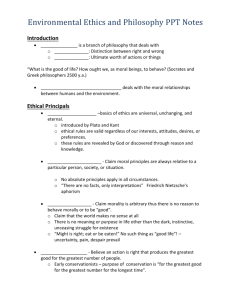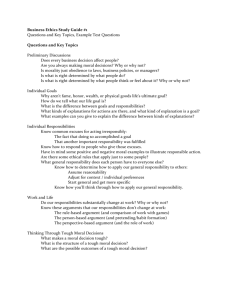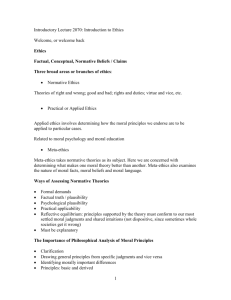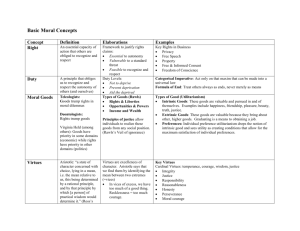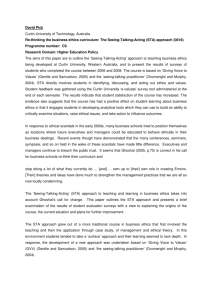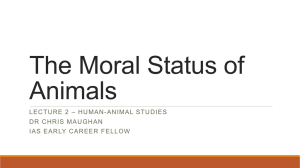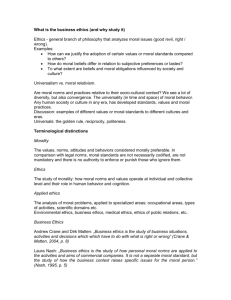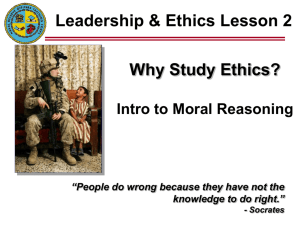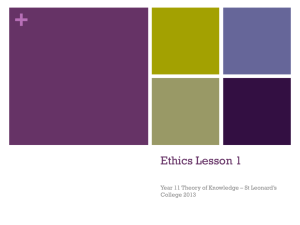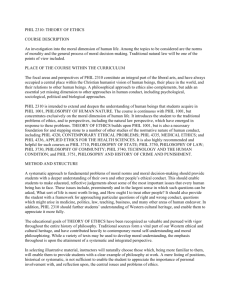Kidder Model
advertisement
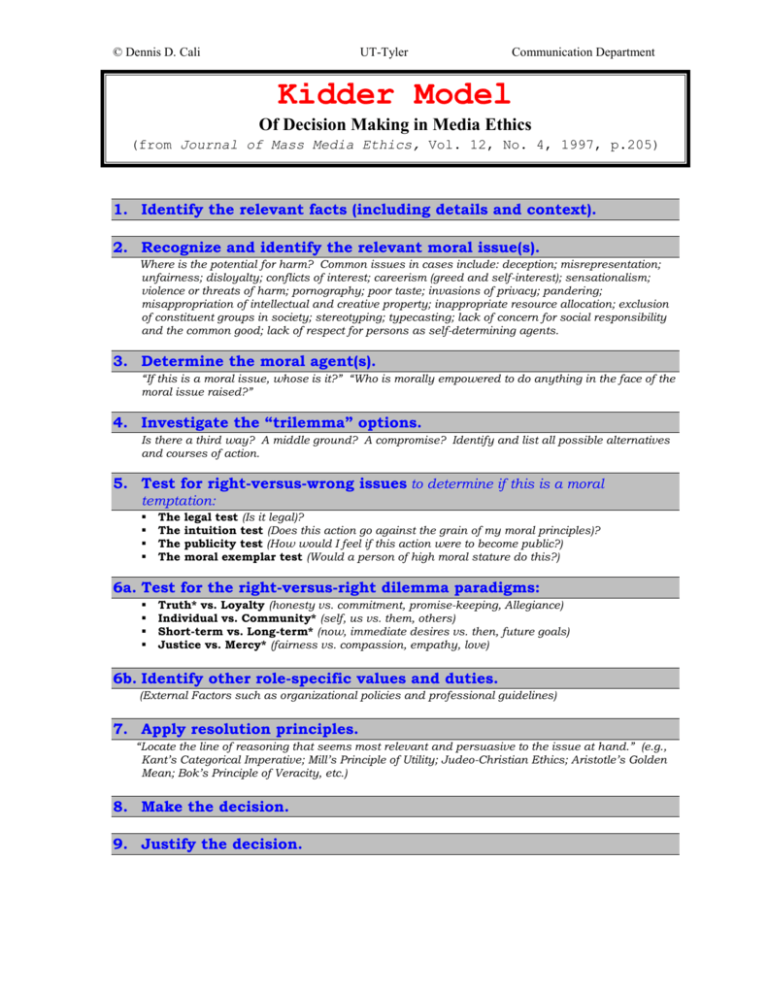
© Dennis D. Cali UT-Tyler Communication Department Kidder Model Of Decision Making in Media Ethics (from Journal of Mass Media Ethics, Vol. 12, No. 4, 1997, p.205) 1. Identify the relevant facts (including details and context). 2. Recognize and identify the relevant moral issue(s). Where is the potential for harm? Common issues in cases include: deception; misrepresentation; unfairness; disloyalty; conflicts of interest; careerism (greed and self-interest); sensationalism; violence or threats of harm; pornography; poor taste; invasions of privacy; pandering; misappropriation of intellectual and creative property; inappropriate resource allocation; exclusion of constituent groups in society; stereotyping; typecasting; lack of concern for social responsibility and the common good; lack of respect for persons as self-determining agents. 3. Determine the moral agent(s). “If this is a moral issue, whose is it?” “Who is morally empowered to do anything in the face of the moral issue raised?” 4. Investigate the “trilemma” options. Is there a third way? A middle ground? A compromise? Identify and list all possible alternatives and courses of action. 5. Test for right-versus-wrong issues to determine if this is a moral temptation: The The The The legal test (Is it legal)? intuition test (Does this action go against the grain of my moral principles)? publicity test (How would I feel if this action were to become public?) moral exemplar test (Would a person of high moral stature do this?) 6a. Test for the right-versus-right dilemma paradigms: Truth* vs. Loyalty (honesty vs. commitment, promise-keeping, Allegiance) Individual vs. Community* (self, us vs. them, others) Short-term vs. Long-term* (now, immediate desires vs. then, future goals) Justice vs. Mercy* (fairness vs. compassion, empathy, love) 6b. Identify other role-specific values and duties. (External Factors such as organizational policies and professional guidelines) 7. Apply resolution principles. “Locate the line of reasoning that seems most relevant and persuasive to the issue at hand.” (e.g., Kant’s Categorical Imperative; Mill’s Principle of Utility; Judeo-Christian Ethics; Aristotle’s Golden Mean; Bok’s Principle of Veracity, etc.) 8. Make the decision. 9. Justify the decision.








